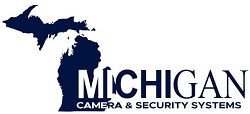Top Manufacturing Security Issues and How to Overcome Them
Top Manufacturing Security Issues and How to Overcome Them
Security Cameras for Manufacturing facilities

Manufacturing facilities in Michigan face a variety of security threats, including unauthorized access and intrusions, theft and vandalism, and industrial espionage. These threats can disrupt operations, compromise safety, and lead to significant financial losses. By integrating advanced strategies, manufacturing plants can create resilient security that mitigates existing threats and adapts to emerging risks.
Unauthorized Access and Intrusions
1) Threat: Intruders may exploit vulnerabilities in perimeter security, gain entry through unguarded entrances, or exploit weak access control systems.
2) Mitigation: Implement a layered security approach that includes perimeter security, access control, and intrusion detection systems. Conduct regular security assessments to identify and address vulnerabilities.
Theft and Vandalism
1) Threat: Thieves may target raw materials, finished products, equipment, or even intellectual property. Vandals may damage machinery, disrupt production lines, or tarnish the facility’s reputation.
2) Mitigation: Implement physical security measures such as fencing, gates, lighting, and surveillance cameras. Conduct regular inventory audits to track and deter theft. Have a plan in place to respond to vandalism and other incidents.
Industrial Espionage
1) Threat: Competitors or foreign entities may attempt to gain unauthorized access to trade secrets, blueprints, and research and development data.
2) Mitigation: Implement security measures to protect confidential data, such as access control, encryption, and data loss prevention systems. Conduct regular security awareness training for employees.
Here are some additional tips for overcoming manufacturing security issues:
1) Implement a comprehensive security program. This should include a risk assessment, security policies and procedures, and regular security training for employees.
2) Use technology to your advantage. There are a variety of security technologies available, such as access control systems, intrusion detection systems, and video surveillance cameras.
3) Have a plan in place for responding to incidents. This should include a plan for notifying the authorities, evacuating employees, and recovering from the incident.
By taking these steps, manufacturing facilities can reduce the risk of security threats and protect their operations, assets, and employees.
Manufacturing Security Issues and Mitigation Strategies
Sabotage and Terrorism
1) Threat: Individuals or groups may target manufacturing facilities to cause harm, disrupt critical supply chains, or undermine economic stability.
2) Mitigation: Implement robust security measures, such as perimeter security, access control, and intrusion detection systems. Conduct regular security assessments and training for employees. Collaborate with law enforcement agencies and threat intelligence organizations.
Insider Threats
1) Threat: Employees, contractors, or vendors with access to the facility may pose significant threats, intentionally or inadvertently compromising security, stealing proprietary information, or engaging in fraudulent activities.
2) Mitigation: Implement access control systems and background checks for all personnel. Conduct regular security awareness training for employees. Establish a confidential reporting system for suspicious activity.
Counterfeit Products and Materials
1) Threat: Counterfeit components or materials can infiltrate the manufacturing process, leading to product defects, safety hazards, and legal liabilities.
2) Mitigation: Implement a supplier qualification process to verify the authenticity of materials. Conduct regular quality control inspections. Establish a traceability system to track materials throughout the supply chain.
Supply Chain Vulnerabilities
1) Threat: Weaknesses in the supply chain can expose facilities to risks such as subpar materials, compromised transportation, and unauthorized access to sensitive data.
2) Mitigation: Conduct risk assessments of suppliers and distributors. Implement security requirements for suppliers and monitor their compliance. Use encryption and other security measures to protect data shared with suppliers.
Natural Disasters and Accidents
1) Threat: Natural disasters or accidents involving hazardous materials or machinery malfunctions can compromise safety and integrity.
2) Mitigation: Develop a disaster preparedness plan and conduct regular training for employees. Implement safety measures to reduce the risk of accidents. Have a plan in place to respond to and recover from disasters and accidents.
Lack of Monitoring and Surveillance
1) Threat: Insufficient monitoring and surveillance systems can leave blind spots in the facility’s security coverage, making it difficult to detect and respond to security breaches in a timely manner.
2) Mitigation: Implement a comprehensive security monitoring system, including video surveillance, intrusion detection systems, and access control systems. Monitor systems 24/7 and have a plan in place to respond to alerts promptly.
Regulatory Compliance Challenges
1) Threat: Failure to meet industry-specific security regulations and standards can lead to legal penalties, reputational damage, and loss of customer trust.
2) Mitigation: Conduct a compliance assessment to identify any gaps in security measures. Implement necessary changes to align with regulations and standards. Monitor regulatory changes and update security measures accordingly.
By implementing these mitigation strategies, manufacturing facilities can reduce the risk of security threats and protect their operations, assets, and employees.
Actionable Solutions for Manufacturing Security Challenges
Unauthorized Access and Intrusions
- Strengthen perimeter security with robust fencing, access gates, and surveillance cameras.
- Implement access control systems that include biometric authentication, smart cards, and visitor management protocols.
- Conduct regular security assessments to identify and address vulnerabilities.
Theft and Vandalism
- Install surveillance cameras in key areas to monitor activities and deter potential criminals.
- Implement well-lit surroundings and motion-sensor lighting to discourage after-hours intruders.
- Conduct regular inventory audits to track and deter theft.
Industrial Espionage
- Secure sensitive information with encryption and access controls.
- Implement data loss prevention systems to monitor and restrict the sharing of confidential data.
- Conduct regular security awareness training for employees.
Sabotage and Terrorism
- Collaborate with law enforcement agencies and implement threat assessment procedures.
- Install physical barriers to protect critical infrastructure and limit vehicle access.
- Implement access controls at entry points, using technologies like biometric authentication, access cards, or facial recognition.
Insider Threats
- Implement strict access controls based on job roles and responsibilities.
- Conduct thorough background checks on employees, contractors, and vendors.
- Establish a confidential reporting system for suspicious activity.
Counterfeit Products and Materials
- Establish a trusted supplier network and verify the authenticity of components.
- Implement serialization and labeling practices to track and trace materials throughout the supply chain.
- Conduct regular quality control inspections.
Supply Chain Vulnerabilities
- Establish risk assessment protocols for suppliers and partners.
- Diversify suppliers to mitigate reliance on a single source.
- Implement security requirements for suppliers and monitor their compliance.
Lack of Monitoring and Surveillance
- Invest in advanced surveillance systems that cover all critical areas of the facility.
- Utilize analytics tools to detect anomalies and unauthorized activities.
- Install alarm systems, video analytics, and motion sensors to enhance surveillance.
Regulatory Compliance Challenges
- Stay informed about industry-specific regulations and standards.
- Collaborate with compliance experts to ensure full adherence to requirements.
By implementing these strategies, manufacturing facilities can create a resilient security posture that not only mitigates existing threats but also adapts to emerging risks. A combination of technology, employee training, and proactive risk management will ensure the safety, integrity, and success of manufacturing operations in an increasingly complex security setting.
Additional Tips
- Conduct regular security training for employees to raise awareness of potential threats and mitigation strategies.
- Implement a layered security approach that includes physical, technical, and administrative controls.
- Develop a comprehensive incident response plan to detect, respond to, and recover from security breaches.
- Review and update security measures regularly to keep pace with evolving threats and technologies.
By taking these steps, manufacturing facilities can significantly reduce their risk of security incidents and protect their operations, assets, and employees.
Service and installation for these makes and models and more


